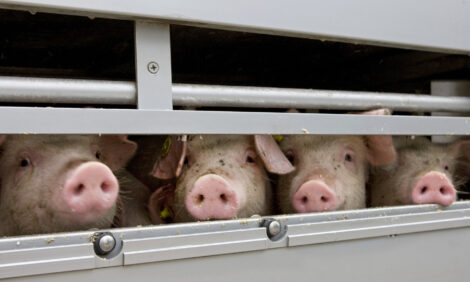



High Corn Prices Mean Higher Pork Prices, But When?
US - How will the pork industry and pork prices respond to much higher feed prices? Futures markets already have provided some signals, says Chris Hurt in his regular report.
From mid-September through November 24, December 2006 corn futures rose $1.28 per bushel and December 2006 soybean meal futures increased $32 per ton.
How have lean hog futures responded? December 2006 lean hog futures were down about $.50 per hundredweight but, June 2007 futures were up $7.27 and October 2007 have gained $9.40. Why have the nearby futures dropped modestly, while the more deferred futures have moved higher? Of course, the answer lies in the markets expectation that some modest sow liquidation could occur this fall and winter adding a bit to pork production. However, both the current modest sow liquidation plus the cancellation of plans to expand mean that pork supplies may begin to decline, especially by the last quarter of 2007.
Additional clues come from how pork producers have adjusted to high feed prices in the past. There have been five previous periods when corn futures exceeded $3.50 per bushel. Those were in 1974, 1980, 1983, 1988, and 1996. In contrast to this year, each of those was associated with a weather related short crop. Two of the years, 1974 and 1996 were also associated with periods of strong demand as is evident this year.
The higher corn prices led to pork producer losses in the year surrounding the high corn prices, except in 1996. Losses for the other four years averaged about $3.34 per live hundredweight during the year of high prices. In 1996, however, high corn prices came at a time when hog prices were also high and profits averaged about $4.00 per live hundredweight in the year surrounding the high corn prices.
Another interesting observation is how quickly hog futures recover after the sharp rise in corn prices. For this analysis consider the length of time from the peak corn prices until lean hog futures make their next high. On average over the past five high corn price events, that has averaged about 20 months, but has ranged from as short as 10 months to as much as 36 months.
A second observation is how much nearby lean hog futures prices increased from the month when corn futures prices peaked until lean hog futures finally made their high about 20 months later, on average. That answer was about $22.00 per hundredweight on average across the five events, but ranged from about $15.00 to $26.00.
The real question of importance is how will the pork industry respond this time? Everyone recognizes that this high feed price event is different. Yields for the 2006 crop were near average and high prices are being driven by potentially vast new demands for energy from crops. Short production years tend to have peak prices for that year and then return closer to “normal“ prices when the next crop replenishes supply. Now, no one can say just how high corn prices will go, and especially what the new “normal“ price of corn will be in coming years.
This makes predicting how the pork industry will respond this time much more difficult. Using the historical averages from the previous five high corn price events suggests that the next high on hog futures could occur in about 20 months. From today, that would be the summer of 2008, which seems reasonable. If lean hog futures were to increase by the average of $22 from current nearby futures levels, that would put them up to $85. This compares with the $86.60 record high since hog futures began trading on a lean basis.
However, before pork producers jump for joy they must remember that the history lesson also says a period of losses of at least a year tend to precede the movement up in hog prices. It is now easy to identify 2007 and perhaps the first-half of 2008 as the period when producers are most vulnerable to losses. Unfortunately, that is a guideline based on history repeating itself. Given the uncertainties of this high corn price event, those guidelines could be on shaky ground.
ThePigSite News Desk









